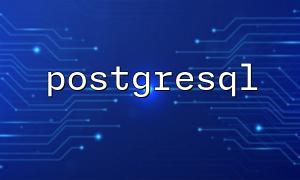With the continuous advancement of web development technologies, Laravel has become a popular PHP framework among developers. To improve the user experience and frontend performance of applications, integrating and managing frontend UI is essential. This article will discuss how to integrate frontend UI in a Laravel project, including using Laravel Mix, integrating popular UI frameworks like Bootstrap, and optimizing frontend design with Blade templates.
Laravel Mix is a powerful tool designed to simplify the compilation and management of CSS and JavaScript. Developers can easily configure and manage frontend resources, quickly integrating modern frameworks like Vue.js or React.
Here is a simple example of Laravel Mix configuration:
mix.js('resources/js/app.js', 'public/js')
.sass('resources/sass/app.scss', 'public/css');With Laravel Mix, you can easily manage and bundle your project's JavaScript and CSS files, ensuring the scalability and maintainability of the project.
Integrating popular UI frameworks, such as Bootstrap, can enhance the visual appeal and interactivity of your project's interface. By using Laravel Mix, you can quickly integrate these frameworks by installing Bootstrap and importing its styles into your stylesheet.
<span class="fun">@import 'bootstrap/scss/bootstrap';</span>
By leveraging Bootstrap, developers can quickly use its components, ensuring compatibility and responsive design across different devices. When integrating any UI framework, it is recommended to follow the best practices to improve the code’s cleanliness and maintainability.
Laravel’s Blade templating engine provides an efficient way to manage layouts and components. By using Blade, developers can easily modularize the frontend UI and manage layouts, improving code reuse and maintainability.
For example, you can create a common layout file that all pages can inherit, ensuring consistency in styles and scripts:
<span class="fun">@yield('content')</span>This approach not only enhances code consistency but also helps you efficiently manage and update frontend UI assets.
The componentization feature in Blade allows you to encapsulate UI elements into independent modules, improving code reuse. By using the same components across different pages, you can reduce redundant code and increase project maintainability. This method enables developers to manage frontend UI more efficiently.
In this article, we discussed several effective methods for integrating frontend UI in Laravel, including using Laravel Mix for asset management, integrating popular UI frameworks (such as Bootstrap), and optimizing frontend UI with Blade templates. By using these methods, you can enhance user experience, improve development efficiency, and increase the maintainability of your project. We hope these strategies will help you implement frontend UI more efficiently in your Laravel development projects.









